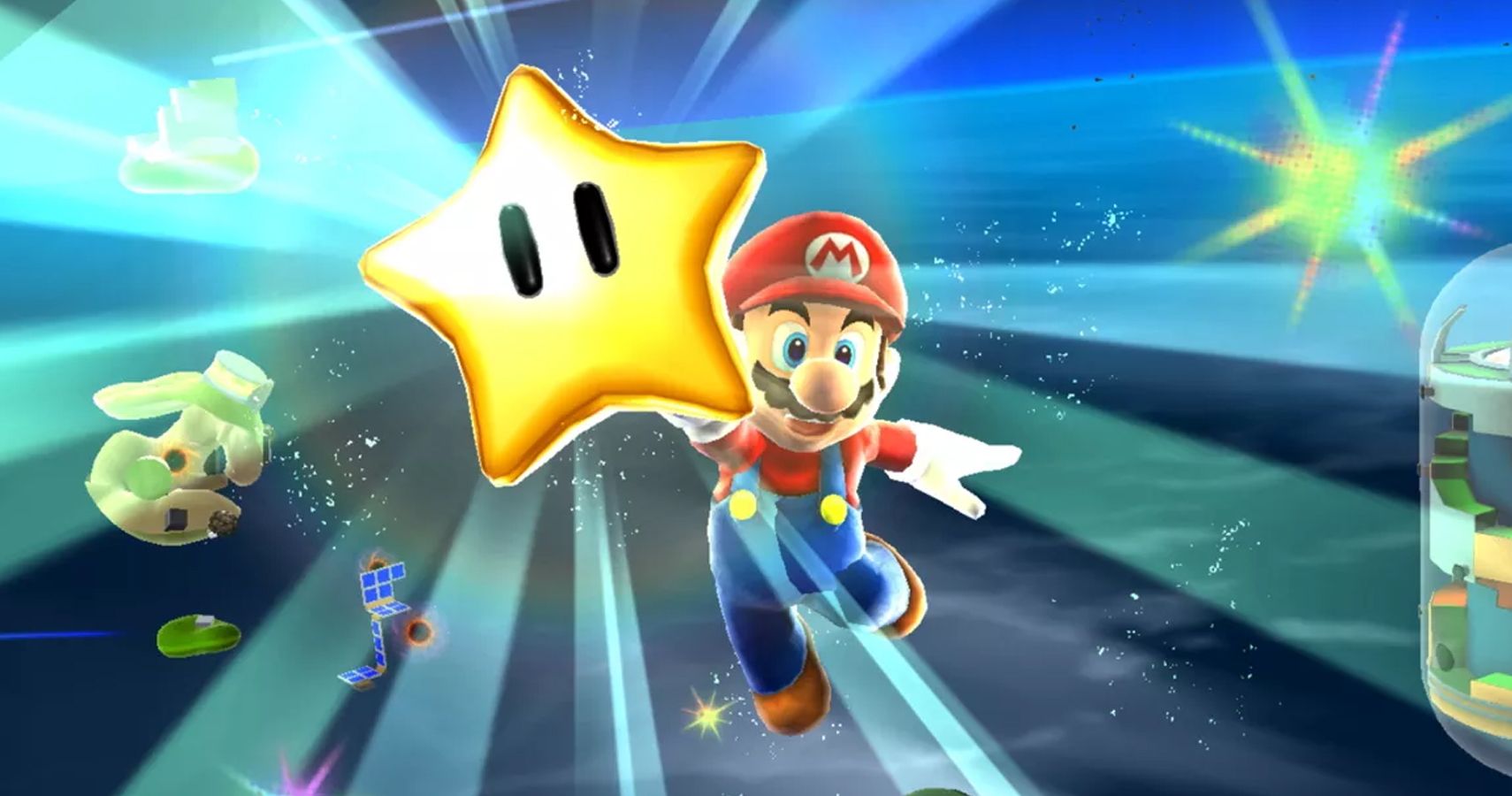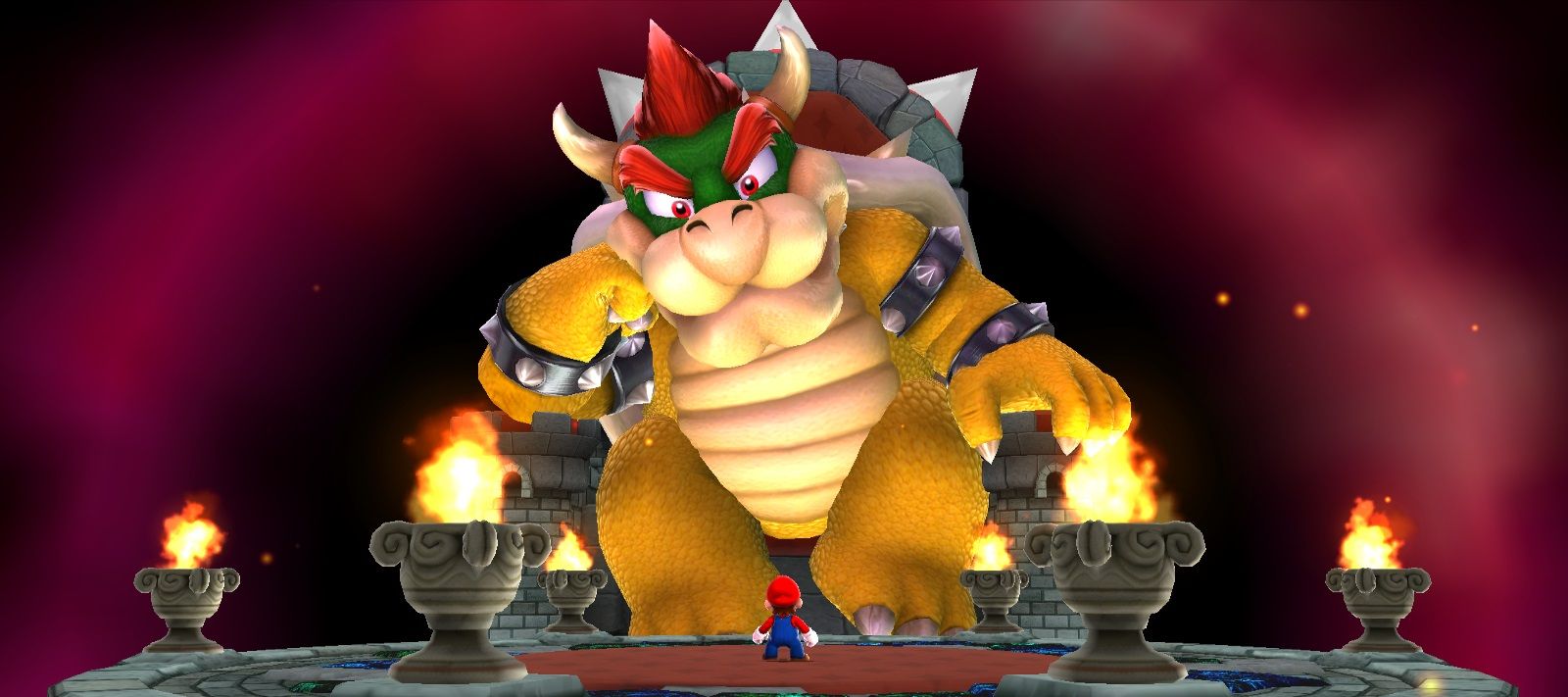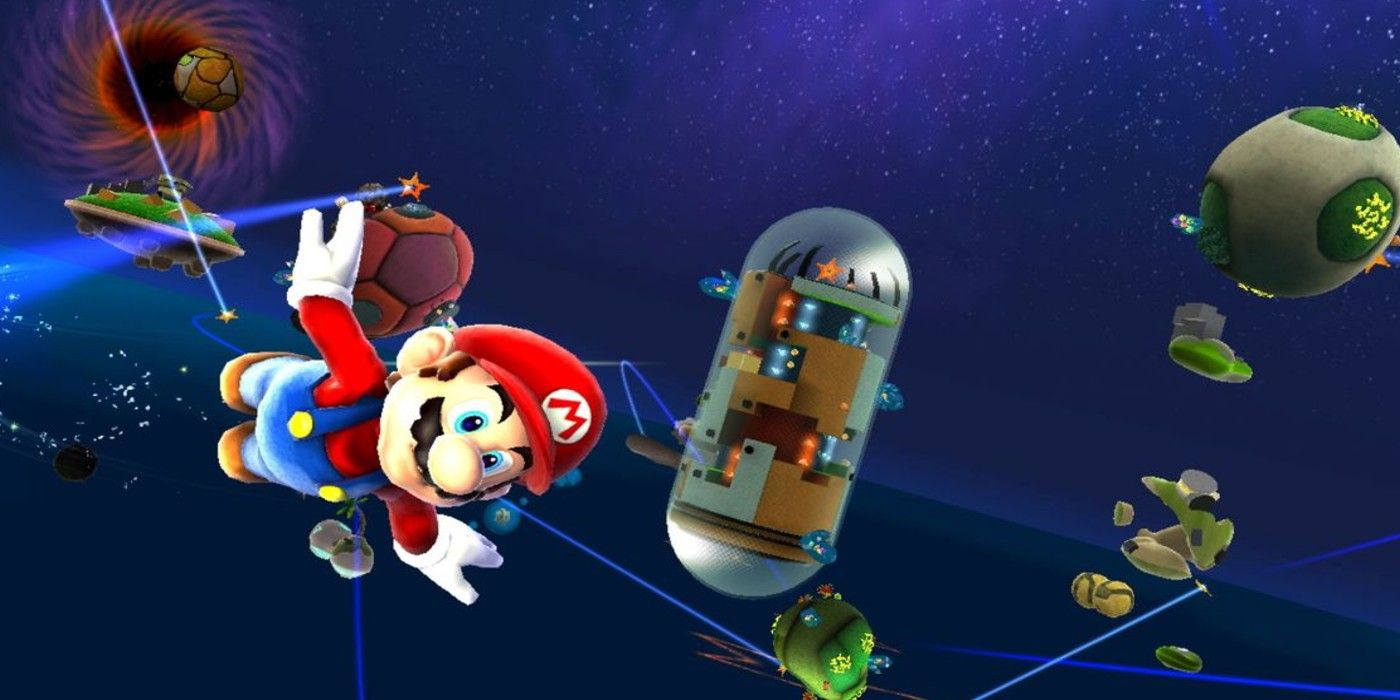It's the year 2007, and the Wii and DS are Nintendo's main consoles. In its newest 3D entry into the Italian platformer giant, menus are operated with motion controls, because simply using the analog stick wouldn't show off the Wii's gimmick. But now it's 2020, and people had hoped for this to be toned down for the Switch port. Yet it failed to deliver, opting to turn the joy-cons into Wii remotes.
All of the motion control aspects of Super Mario Galaxy could be transformed to use other, controller-based elements - they aren't essential to the gameplay, and only served to showcase what the Wii could do. We're not on the Wii for this port, so a change would have worked. The remote and nun-chuck combo doesn't translate to the joy-con in the way that Nintendo likely hoped, let alone the combined joy-con controller, and then there's the handheld. Oddly enough, Nintendo chose to swap the motion controls for touch-screen support which means that you are forced into an awkward tap-dance between joy-cons on the side and screen in the center which, for gameplay elements that combined controller and motion controls, got very tedious.
What's the solution, then? Well, the motion controls used are for an in-game cursor - that's it. The easy way out would have been to have an option to make this cursor controllable with the right analog stick. For those who want and enjoy the motion controls, or don't use handheld (which is every Switch Lite user), then they can keep it enabled, giving an element of choice so that Super Mario Galaxy can be experienced without the gimmick or as it was intended, with the gimmick.
Doing this would have been the simplest choice, as it wouldn't require removing the cursor or completely altering gameplay segments to fit the removal of the motion controls - it's a win-win, something that emulations on PC managed to pull off. Plenty of games have cursors operated with analog sticks across all platforms, so it wouldn't have been new nor would it have been unprecedented for even Nintendo. So, why didn't they do it?
Shaking your joy-cons is an element of gameplay that lets you spin Mario to destroy ice or fend off enemies, but Nintendo decided to let players press Y rapidly instead, a new addition for the Switch, so the question of why they didn't make the effort to have other elements of motion control entirely optional is unclear. Nintendo dipped its toes in the abandonment of janky, often unreliable motion controls, but didn't go the full mile, and the disappointment lies in the fact that Super Mario Galaxy is, at its core, an extension of the 3D games that came before it. The only major anchor to its floating sky-ship is the fact that to grab collectibles, platform through space, select levels, or just pick 'yes' or 'no' in a menu is done through motion controls. The games before it didn't need this, and Super Mario Galaxy, despite being a Wii game, didn't either - it was tacked on back then, and it's tacked on now.
Luckily, there's something good that can come from this blunder on Nintendo's part: they can learn from it. Super Mario Galaxy 2 deserves a port as much as its predecessor, and a port of the sequel could easily learn from the critiques of its precursor. Allowing for an option in the menu, with menus being entirely relegated to analog controls rather than motion controls by default, would fix most of the gripes that people had with the first game's port. On top of this, it would set a precedent with future Wii ports should Nintendo so choose to bring more to the Switch, and that's that motion controls had their time on the console of old and don't necessarily translate to the more modern Switch. Many of the games tended to use motion controls as a gimmick, so it's easy enough to find workarounds to make them inessential, especially given that a lot of the time, motion controls were simply used in place of easier, more intuitive controls that games both before and after the Wii opted for.
That being said, Nintendo did remove bug artifacts, added GameCube controller support for Sunshine, and implemented reverse camera options after launch. With how simple it would be to swap out motion controls for the analog stick, as PC emulations managed, then perhaps Nintendo could update the collection with this feature. That being said, a lot of these changes rolled out in the months of October to November, so if Nintendo was indeed going to do it, the publisher likely would have by now.
For now, playing Super Mario Galaxy on the Switch takes some getting used to, especially for the unlucky ones who either can't play docked or only have a Lite available, but that's not to say that it isn't worth trying. It's gorgeous in the upscaled 1080p, it holds up in its platforming segments, the new characters became instant classics for a reason, and the boss fights and designs are a treat. Super Mario Galaxy was and is one of the greats, but it's a shame that the Switch port did so little to try and modernize it for current-gen. Perhaps, if Zelda does get its own 35th-anniversary bundle, Nintendo will put a little more effort in. Let's hope.



